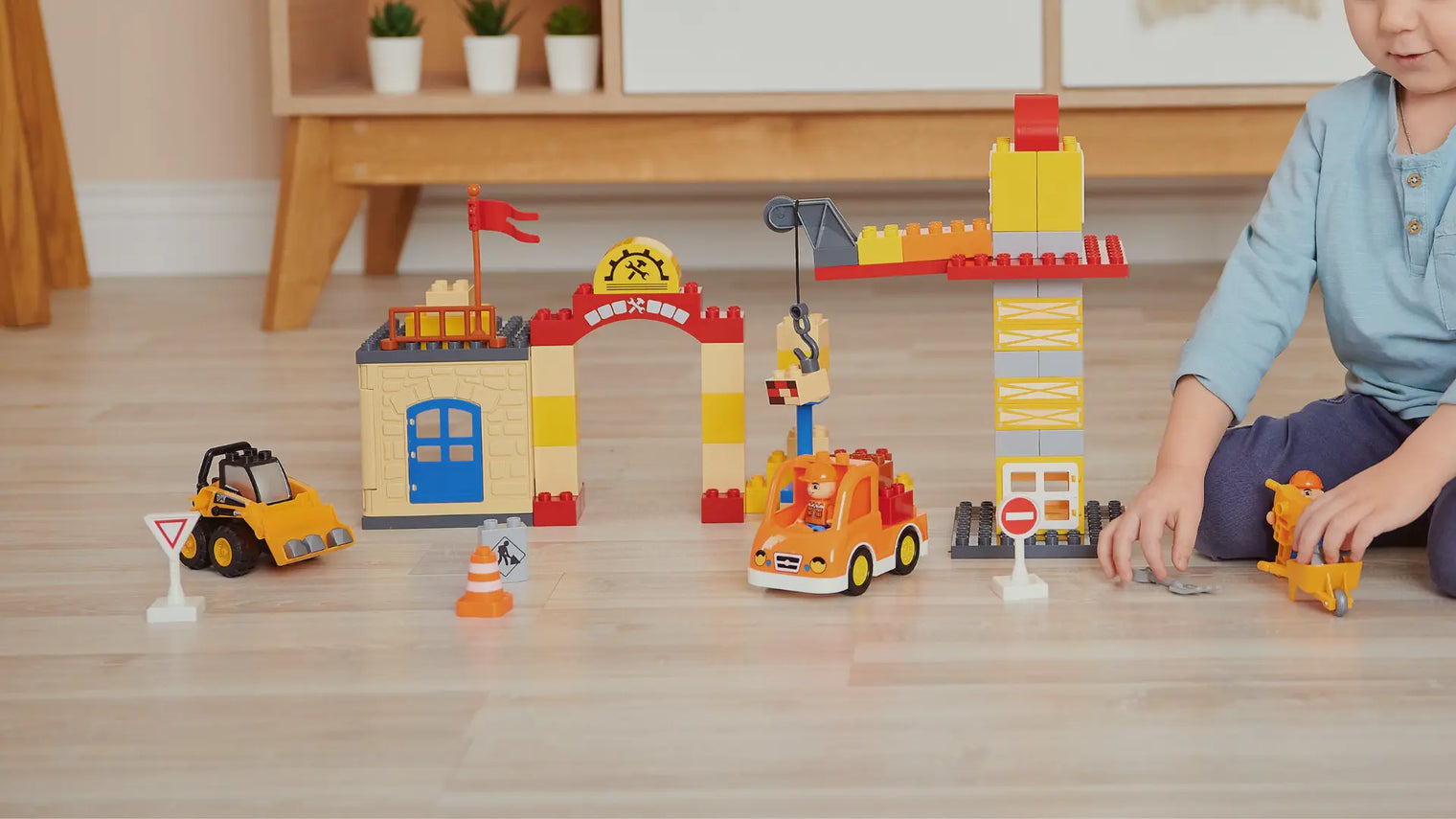From math toys for toddlers to coding kits, discover STEM learning toys that make science, math, and engineering fun for kids.
In today's rapidly evolving world, parents and educators are increasingly recognizing the importance of introducing children to science, technology, engineering, and mathematics (STEM) concepts from an early age. One of the most effective and engaging ways to accomplish this is through STEM learning toys. These innovative educational tools combine fun and learning, making complex concepts accessible and enjoyable for children of all ages.
What is STEM?
STEM is an acronym that stands for Science, Technology, Engineering, and Mathematics. This educational approach integrates these four disciplines into a cohesive learning paradigm that emphasizes real-world applications and interdisciplinary connections. Rather than teaching these subjects in isolation, STEM education recognizes that these fields naturally overlap and reinforce each other in practical applications. Science provides the foundation for understanding the natural world, technology offers tools for solving problems, engineering applies scientific principles to design solutions, and mathematics serves as the universal language that connects all these disciplines. This integrated approach mirrors how professionals actually work in modern industries, where complex problems require knowledge and skills from multiple STEM fields.
What Are STEM Toys?
STEM learning toys are specially designed educational products that introduce children to fundamental concepts in science, technology, engineering, and mathematics through hands-on play and exploration. Unlike traditional toys that focus primarily on entertainment, these learning toys are intentionally crafted to develop critical thinking skills, problem-solving abilities, and scientific reasoning while still providing the joy and engagement that children crave.
These educational toys bridge the gap between play and learning, transforming abstract concepts into tangible, interactive experiences. Whether it's building blocks that teach engineering principles, coding games that introduce programming logic, or math toys for toddlers that make numbers fun, STEM toys create an environment where children can explore, experiment, and discover.
The Science Behind STEM Learning Toys
Research consistently demonstrates that children learn best through active engagement and hands-on experiences. STEM toys leverage this natural learning preference by providing opportunities for children to manipulate objects, test hypotheses, and observe outcomes. This experiential learning approach helps solidify understanding and creates lasting memories associated with STEM concepts.
Educational toys that focus on STEM subjects also support the development of executive function skills, including planning, working memory, and cognitive flexibility. When children engage with building sets, robotics kits, or science experiment toys, they practice these essential skills while having fun.
Types of STEM Learning Toys
1. Building and Construction Toys
Building sets represent one of the most popular categories of STEM toys, and for good reason. These toys naturally introduce engineering and mathematical concepts through spatial reasoning, pattern recognition, and structural design. From simple wooden blocks for toddlers to advanced robotics kits for older children, construction toys scale with a child's developmental stage.
Popular building toys include magnetic tiles, snap circuits, and programmable robots. These educational tools help children understand concepts like balance, symmetry, cause and effect, and logical sequencing. Many building sets also incorporate elements of technology, allowing children to create moving parts, lights, and sounds.
2. Math Toys for Toddlers and Young Children
Mathematics can be intimidating for many children, but math toys for toddlers and preschoolers make numbers approachable and enjoyable. These learning toys often use colorful manipulatives, counting games, and pattern activities to introduce basic mathematical concepts like counting, sorting, and simple addition and subtraction.
Abacuses, counting bears, shape sorters, and number puzzles are excellent examples of math toys that help young children develop number sense and mathematical reasoning. These toys provide visual and tactile experiences that make abstract mathematical concepts concrete and understandable.
3. Science Experiment Kits
Science-focused learning toys allow children to conduct safe, age-appropriate experiments that demonstrate scientific principles. These kits might include chemistry sets, microscope kits, weather stations, or crystal growing experiments. By engaging in hands-on scientific exploration, children develop observation skills, learn the scientific method, and gain confidence in their ability to understand the natural world.
4. Technology and Coding Toys
In our increasingly digital world, technology and coding toys have become essential components of STEM education. These educational toys introduce children to programming concepts, logical thinking, and digital literacy without requiring screens or complex software. Screen-free coding toys, programmable robots, and electronic circuit kits help children understand how technology works and how they can create with it.
5. Engineering and Robotics Kits
Engineering-focused STEM toys challenge children to design, build, and test their creations. These toys might include simple machine kits, robotics platforms, or engineering challenge sets. Through trial and error, children learn about design principles, problem-solving strategies, and the iterative nature of engineering.
Benefits of STEM Learning Toys
1. Cognitive Development
STEM toys promote critical thinking, logical reasoning, and problem-solving skills that are essential for academic success and life skills. Children learn to approach challenges systematically, test solutions, and adapt their strategies based on results. These cognitive skills transfer to academic subjects and real-world situations.
2. Creativity and Innovation
Contrary to the misconception that STEM subjects are rigid and uncreative, quality STEM learning toys encourage creativity and innovation. Open-ended building sets, design challenges, and invention kits allow children to express their creativity while applying scientific and mathematical principles.
3. Confidence Building
Success with STEM toys helps children build confidence in their abilities to understand and work with complex concepts. This confidence is particularly important for encouraging participation in STEM fields, especially among groups that have been historically underrepresented in these areas.
4. Preparation for Future Learning
Early exposure to STEM concepts through educational toys creates a foundation for more advanced learning. Children who engage with STEM toys are often more prepared for formal STEM education and more likely to pursue STEM subjects in school.

Choosing the Right STEM Learning Toys
1. Age Appropriateness
When selecting learning toys, it's crucial to consider the child's developmental stage. Math toys for toddlers should focus on basic concepts like counting and shapes, while older children can handle more complex engineering challenges or coding concepts. Age-appropriate toys ensure that children can engage successfully without becoming frustrated or overwhelmed.
2. Safety Considerations
All educational toys should meet safety standards and be appropriate for the intended age group. This is particularly important for science kits and building sets that might contain small parts or require adult supervision.
3. Educational Value
The best STEM toys balance fun and learning, providing clear educational benefits while maintaining engagement. Look for toys that encourage exploration, experimentation, and creative problem-solving rather than passive consumption.
4. Open-Ended vs. Structured Play
Both open-ended and structured STEM toys have their place in a child's learning journey. Open-ended toys like building blocks allow for unlimited creativity, while structured toys like science kits provide guided learning experiences. A combination of both types supports comprehensive learning.
Integrating STEM Learning Toys into Daily Life
1. Creating a STEM-Rich Environment
Parents and educators can create environments that support STEM learning by providing access to diverse educational toys and encouraging exploration. This might include setting up a dedicated space for building and experimenting or rotating toys to maintain interest and engagement.
2. Encouraging Experimentation
The key to maximizing the benefits of STEM toys is encouraging children to experiment, make mistakes, and try again. This process of iteration and refinement is fundamental to scientific and engineering thinking.
3. Connecting Play to Real-World Applications
Help children see the connections between their play experiences and real-world applications. When building with blocks, discuss how architects and engineers use similar principles. When conducting experiments, relate the findings to everyday phenomena.
The Future of STEM Learning Toys
As technology continues to advance, STEM learning toys are evolving to incorporate new innovations while maintaining their core educational value. Augmented reality features, artificial intelligence integration, and advanced sensors are being incorporated into educational toys, creating even more immersive and personalized learning experiences.
However, the fundamental principles remain the same: effective STEM toys should encourage hands-on exploration, critical thinking, and creative problem-solving. Whether high-tech or low-tech, the best learning toys inspire curiosity and help children develop the skills they need for success in an increasingly complex world.
Conclusion
STEM learning toys represent a powerful tool for introducing children to the wonders of science, technology, engineering, and mathematics. From math toys that make numbers fun to advanced robotics kits that teach programming concepts, these educational toys provide engaging pathways to learning that can inspire a lifelong love of discovery and innovation.
The investment in quality STEM learning toys is an investment in a child's future, providing them with the foundation they need to become innovative thinkers, creative problem-solvers, and confident learners who are prepared to tackle the complex challenges of our rapidly changing world.

